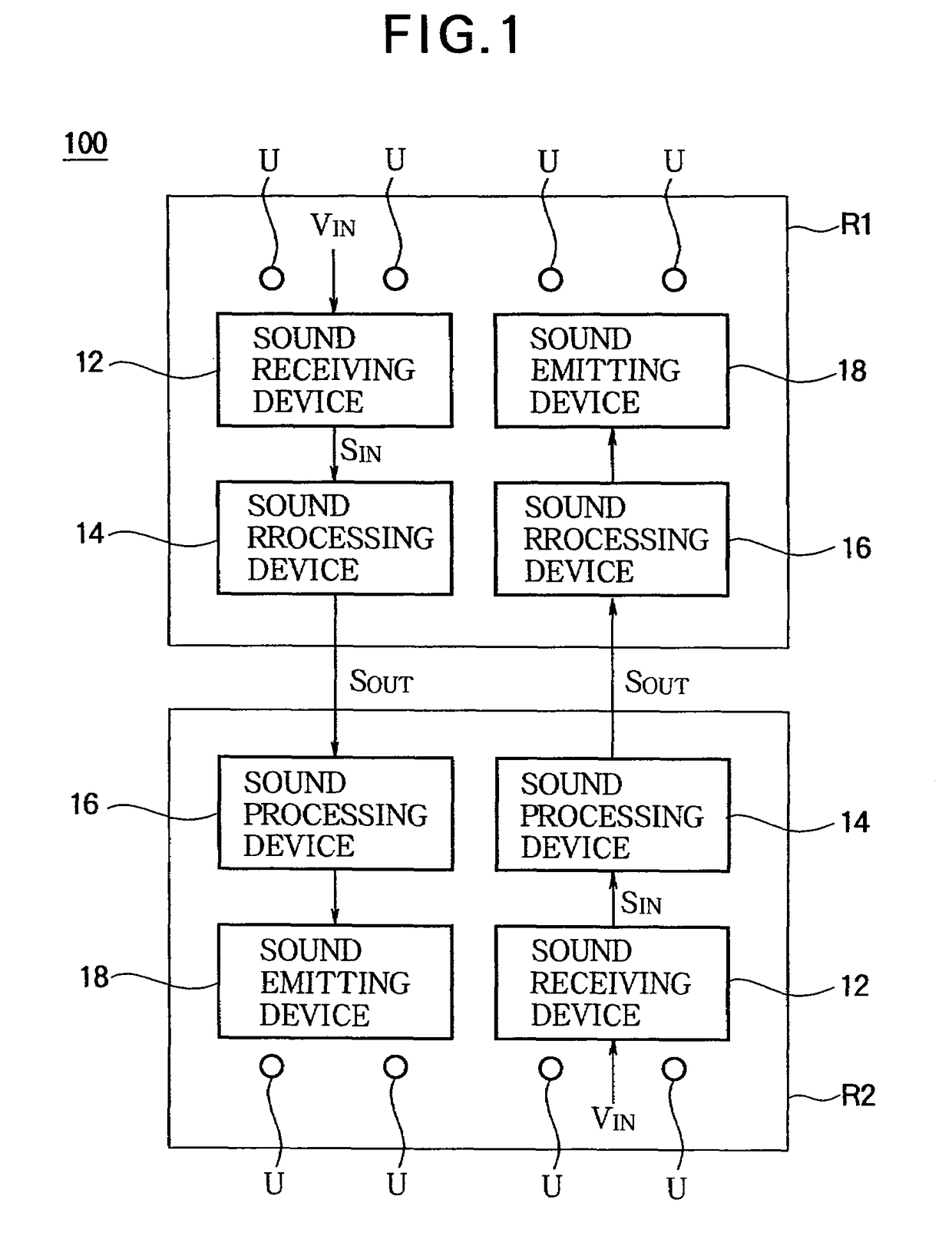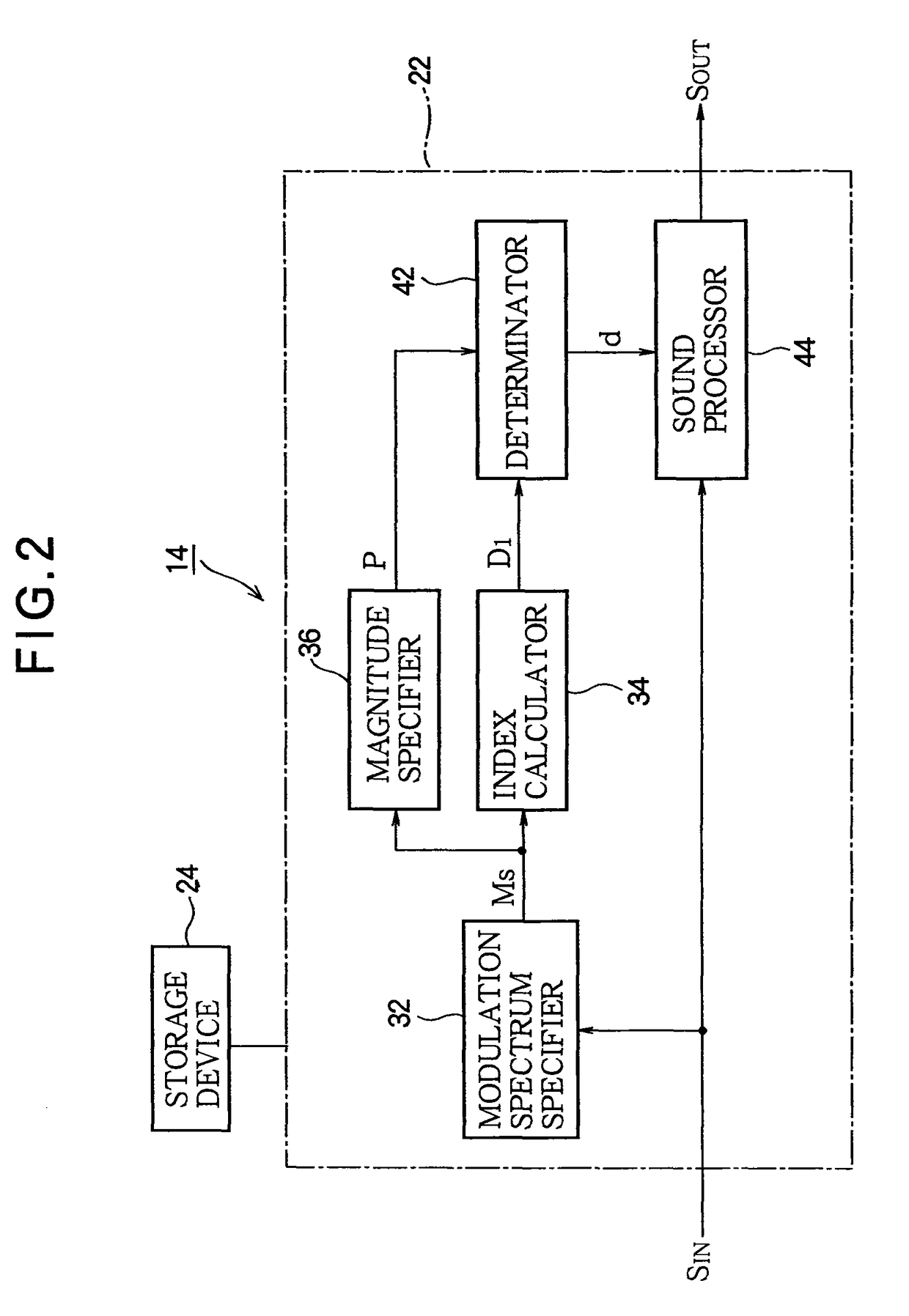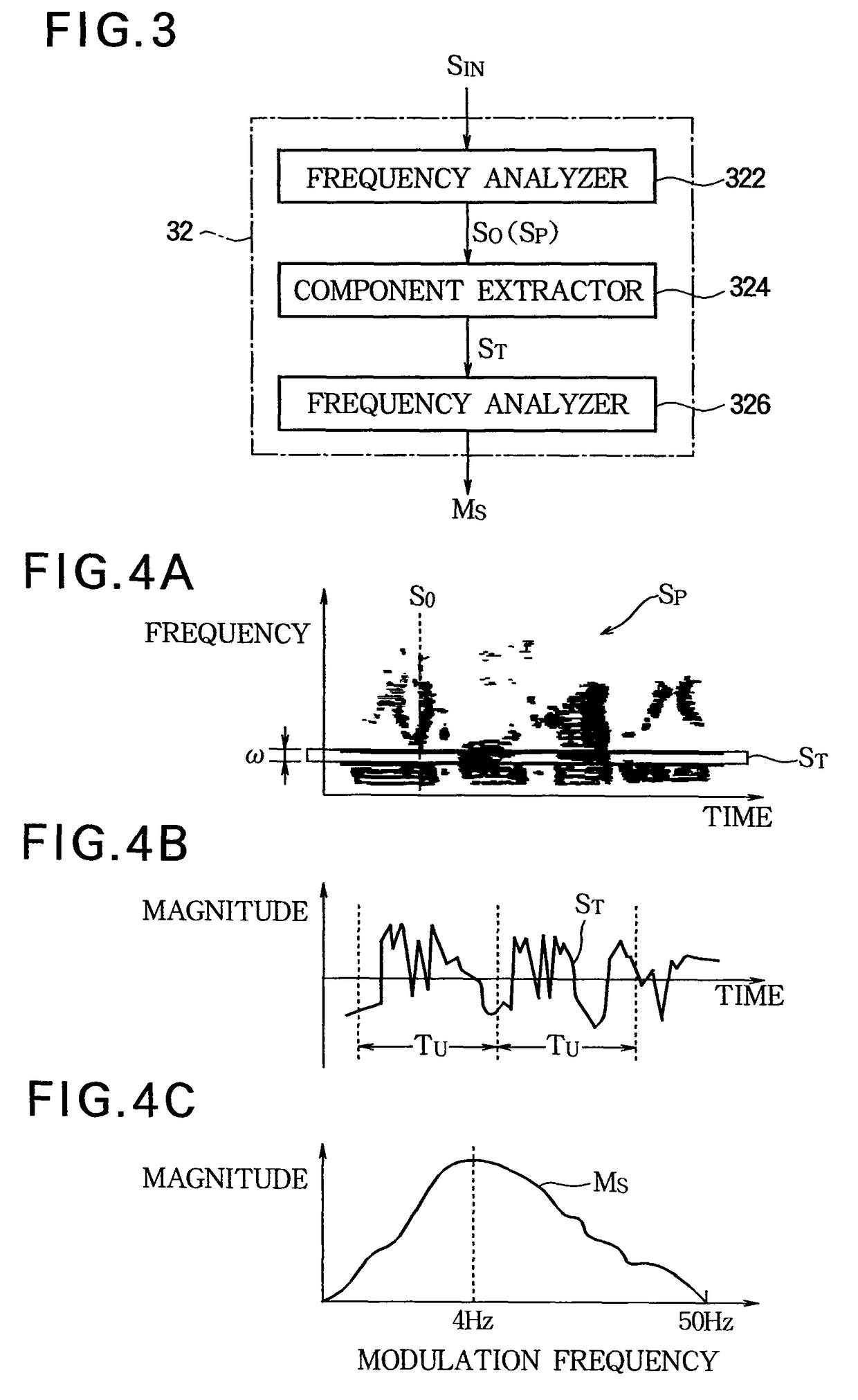Sound processing device and program
a sound processing and program technology, applied in the field of sound processing devices and programs, can solve the problems of difficult to determine the presence or absence of vocal sounds, noise has a variety of frequency characteristics, etc., and achieve the effect of accurate determination
- Summary
- Abstract
- Description
- Claims
- Application Information
AI Technical Summary
Benefits of technology
Problems solved by technology
Method used
Image
Examples
example modification 1
(1) Example Modification 1
[0080]The configuration of the modulation spectrum specifier 32 is modified to that shown in FIG. 12. The modulation spectrum specifier 32 of FIG. 12 includes an averager 328 in addition to the frequency analyzer 322, the component extractor 324, and the frequency analyzer 326 which are the same components as those of FIG. 3. Here, each of the plurality of unit intervals TU, into which the temporal trajectory ST generated by the component extractor 324 is divided, is further divided into m intervals (hereinafter referred to as “divided intervals”) where “m” is a natural number greater than 1. The frequency analyzer 326 performs a Fourier transform on the temporal trajectory ST in each divided interval to calculate a modulation spectrum of each divided interval. The averager 328 averages m modulation spectra calculated for the m divided intervals included in each unit interval TU to calculate the modulation spectrum MS of the unit interval TU. Since the numb...
example modification 2
(2) Example Modification 2
[0081]It is also preferable to employ a configuration in which the thresholds TH (THd1, THd2, THd3, THp, and THdv) used to determine whether the input sound VIN is a vocal sound or a non-vocal sound are variably controlled. For example, as shown in FIG. 13, a threshold setter 68 is added to the sound processing device 14 of the third embodiment. The threshold setter 68 variably controls the threshold TH according to the SN ratio R calculated by the SN ratio specifier 64.
[0082]If the SN ratio R is low even though the input sound VIN is actually a vocal sound, the determinator 42 is likely to erroneously determine that the input sound VIN is a non-vocal sound. Therefore, the threshold setter 68 controls each threshold TH such that the input sound VIN is more easily determined to be a vocal sound as the SN ratio R calculated by the SN ratio specifier 64 decreases. For example, the threshold value THd3 is increased and the threshold THp or the threshold THdv is...
example modification 3
(3) Example Modification 3
[0083]In each of the above embodiments, there is a possibility that a unit interval TU is determined to be a non-vocal sound when the proportion of a vocal sound included in the unit interval TU is low (for example, when a vocal sound is included only in a short interval within the unit interval TU). Accordingly, in the configuration in which the input sound VIN is collectively muted for all unit intervals TU that have all been determined to be a non-vocal sound, a unit interval TU which includes a small part of the start or end portion of a vocal sound (particularly, an unvoiced consonant portion) may be determined to be a non-vocal sound and may then be muted. Therefore, it is preferable to employ a configuration in which the input sound VIN of each of a plurality of unit intervals TU is muted taking into consideration of determinations that the determinator 42 makes for the plurality of unit intervals TU.
[0084]For example, the sound processor 44 does not...
PUM
 Login to View More
Login to View More Abstract
Description
Claims
Application Information
 Login to View More
Login to View More - R&D
- Intellectual Property
- Life Sciences
- Materials
- Tech Scout
- Unparalleled Data Quality
- Higher Quality Content
- 60% Fewer Hallucinations
Browse by: Latest US Patents, China's latest patents, Technical Efficacy Thesaurus, Application Domain, Technology Topic, Popular Technical Reports.
© 2025 PatSnap. All rights reserved.Legal|Privacy policy|Modern Slavery Act Transparency Statement|Sitemap|About US| Contact US: help@patsnap.com



